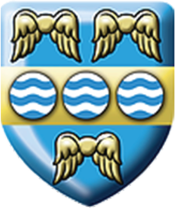School Loans: Types, Conditions And How To Apply
The cost of education is frequently costly, but it is a vital investment in one's future. When they attempt to pay for higher education without financial aid, many students run into difficulties. especially when tuition, book prices, and other fees go up.
A student loan is a common way to finance your education. It can offer flexible repayment alternatives as well as the money needed to pay for educational costs. But, navigating the complicated world of student loans can be stressful. Many students still have questions regarding the several loan kinds that are offered, the application process, and the repayment alternatives.
Let's find out what school loans are, the different types of loans available, how to apply for them, and how to repay them.
What Is A School Loan
School loans are financial instruments designed to help students pay for the higher education costs. It usually covers tuition, fees, room and board, textbooks, and other educational expenses. These loans are typically offered by banks, credit unions, and government agencies, and are available to both undergraduate and graduate students. The funds borrowed through school loans are intended to be used solely for educational purposes and must be repaid over time, usually with interest.
Federal student loans, which are provided by the U.S. Department of Education, and private student loans, which are provided by private lenders like banks and credit unions, are the two most popular types of educational loans. Lower interest rates, adaptable repayment schedules, and the potential for loan forgiveness or discharge under certain conditions are just a few advantages of federal student loans. Contrarily, private student loans can be a suitable alternative for students who require additional funding beyond what is provided by federal loans but have higher interest rates and fewer borrower protections.
Types of School Loans
There are several types of school loans that students and their families can choose from to help finance their education. Here are some of the most common types of school loans:
Federal Direct Subsidized Loans
Federal direct subsidized loans are provided by the U.S. Department of Education and available to undergraduate students who demonstrate financial need. The government pays the interest on these loans while the student is enrolled in school at least half-time and during certain other periods, such as a deferment or grace period.
Federal Direct Unsubsidized Loans
Federal direct unsubsidized loans are also provided by the U.S. Department of Education and are available to undergraduate and graduate students regardless of financial need. The student is responsible for paying all interest, which accrues from the time the loan is disbursed.
PLUS Loans
These are federal loans that parents of dependent undergraduate students and graduate or professional students can take out to help pay for education expenses. PLUS loans require a credit check and may have higher interest rates than other federal student loans.
Private Student Loans
Private loans are provided by banks, credit unions, and other private lenders. These loans may have variable interest rates and fewer borrower protections than federal loans. Private loans may require a credit check and a cosigner.
State Student Loans
Some states offer their own student loan programs to residents. These loans may have lower interest rates and more flexible repayment options than private loans, but they may also have stricter eligibility requirements.
How to Apply for School Loans
Applying for school loans can be a daunting task, but the process is relatively straightforward. Here is a step-by-step guide to applying for both federal and private student loans:
Federal Student Loans
First of all, you need to complete the Free Application for Federal Student Aid (FAFSA). The FAFSA is a free application that determines your eligibility for federal financial aid. You can complete the FAFSA online at fafsa.gov, and you will need to provide information about your income, assets, and other financial details.
After you submit the FAFSA, you will receive a financial aid offer from your school, which may include federal student loans. Review the offer carefully, and only accept the amount of loans you need to cover your educational expenses.
If you are a first-time borrower of federal student loans, you will need to complete entrance counseling to understand your rights and responsibilities as a borrower. You can complete entrance counseling online at studentloans.gov.
Private Student Loans
The first step when you are applying for a private student loan is to research lenders and compare loan options. Start by researching private student loan lenders to find the best option for your needs. Compare interest rates, fees, repayment terms, and other factors to choose the loan that is right for you. Don’t forget to check your credit score. Private student loans typically require a credit check, so it's important to know your credit score before applying. If your credit score is low, consider finding a co-signer to improve your chances of approval and secure a lower interest rate.
For the next step submit your application. You can typically apply for private student loans online, and will need to provide information about your income, assets, and other financial details. Be prepared to provide documentation to verify your income and other information.
After you submit your application, you will receive a loan offer from the lender. Review the offer carefully, and only accept the amount of loans you need to cover your educational expenses.

